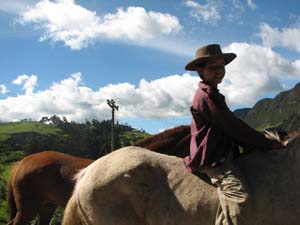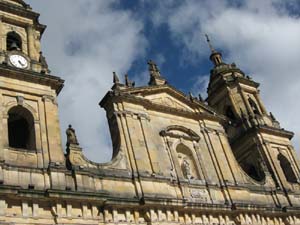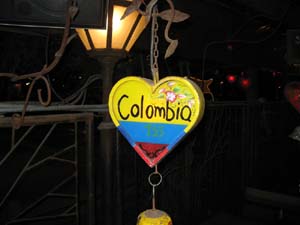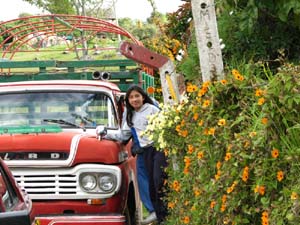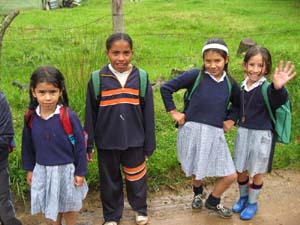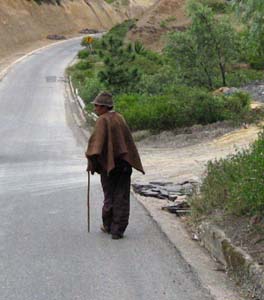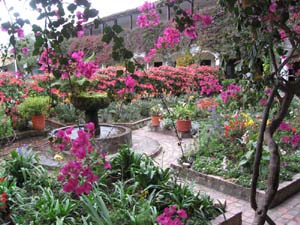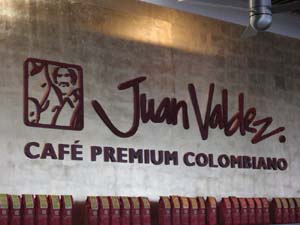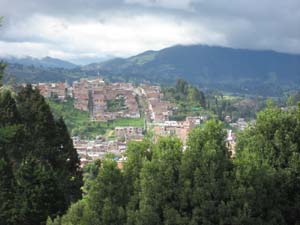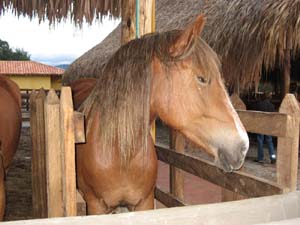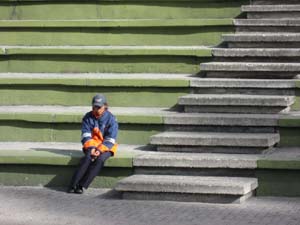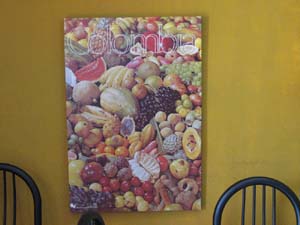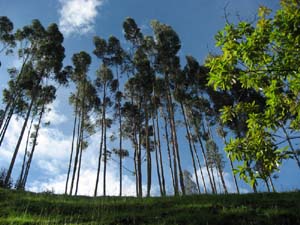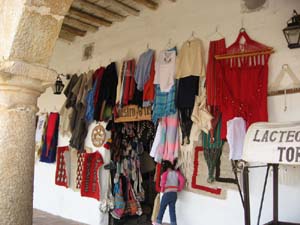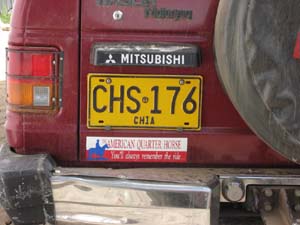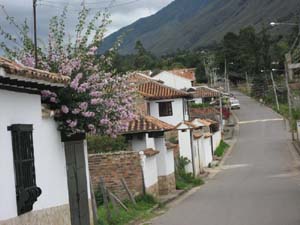Myth # 1. Colombia is a poor and insignificant country. Wrong.
First off, of all the South American countries, the United States considers Colombia to be the stronghold, the foothold of the continent. This is the third ranked county (at peace) in the world in terms of US foreign aid. The US basically subsidizes the Colombian army, and their fight against the drug cartels and the cartels' own sophisticated army of guerillas. The current Colombian president, Uribe, is a conservative (as opposed to the Chavez brand of socialism), a technocrat, with a great vision for economic growth in Colombia. He is sensitive to his people, and he is determined to integrate the economy of Colombia into the world ecomony, and continues to nurture ties with the United States and Europe. Uribe has also wielded a firm hand in controlling the cartels and lawlessness which has been Colombia's unfortunate legacy for the past few decades.
Plus Colombia has a strong economy. Their currency (peso) is fairly stable, they have important business ties with the US. Colombia is the second largest exporter of cut flowers (second only to Holland), they have oil and natural gas, precious stones (emeralds are big business)and an enormous coffee export business. Starbucks has a rival in Colombia now - Juan Valdez Coffee (remember the cans with the picture of the guy and his donkey) - they are opening little Juan Valdez stores in the tourist and shopping areas, complete with WiFi internet, pastries, and the best Colombian espresso you can imagine. But I have to score Colombia very low on the wine scale. They're big on beer, but the only good vino tinto to be found is imported - mostly from Chile and Argentina.
Myth # 2. Colombia is a dangerous place to visit. Wrong.
There is still drug trafficking, there are still guerilla strongholds and coca fields, still areas which are considered dangerous - but these areas are now limited to the most remote jungle regions of the country. Life in the cities and villages is normal. Uribe is in his 5th year of presidency, and in that time he has used his power and the country's judicial system to drive the cartels out of the cities and out of the mainstream businesses. And he has used the huge Colombian army to push the drug producers and guerillas out into the remote jungles. During our drives in and out of Bogota, through the countryside and villages, I saw repeated guard stations - at bridges, major crossings, random highway locations. These ubiquitous armed guards are the tool for insuring safety to the population and safety in private and commercial transport. They are a reminder of the dangers of years past, but they are also insurance against dangers in the present and the future.
Myth # 3. Colombia is a hot equatorial country. Right and Wrong.
As I sit here wrapped in my ruana (wool poncho) I can confirm that Bogota and surroundings are not hot. Situated at around 9,000 feet elevation, it's hard to imagine that the sun is blaring down from directly above. Colombia straddles the equator, but the Andes mountain range changes everything. Apparently there are two seasons here: winter (cool and wet) and summer (cool and dry). But it never freezes, there is never a lack of solar radiation or a fluxuation in photoperiod, the days are never longer or shorter, it is never really hot or really cold. But the diversity in plant life is astonishing.
Within a 50 mile radius one can encounter alpine plants - large soft leaves covered with dense silver hairs to protect them from the intense radiation of the equatorial sun at 11,000 feet. One finds dark green cedar trees, eucalyptus, orchids and bromeliads, berries and flowers of astonishing size and color. Then we see cactus - prickly pear and yucca, agave, strange things that look like joshua trees, then huge native trees with large dark green leaves, draped with spanish moss. And this is only around Bogota. Our three hour drive north and east to Villa de Leyva took us into mountainous desert country - huge rocky faces, dry warm wind, stones and sandy hillsides. I've been told that another hour or two drive in different directions, and one drops down into the hot humid jungle, the land of coffee and banana plantations. And then there are the Pacific coast regions with tropical beaches and desert stretches of sand and rock reaching into the ocean, the Atlantic and Carribean villages, the old Spanish port of Cartagena. The vast grasslands of Los Llanos (cattle and cowboy country), lakes and National parks. Once during lunch I remarked that this may be the most beautiful country I've seen. The unanimous response was 'yes, this is pretty, but you haven't seen anything yet!' Somehow, I believe it. Columbia is the second most biodiverse nation in the world. A botanist's dream.
Myth # 3. Colombia isn't very 'horsey'. Wrong.
Judging by what I have seen so far, horses are a very important part of Colombia's culture. The Paso Fino's (and all the different variations - trocha, gallope, etc.) are the dominant breed. Paso's are a very very big industry in Colombia, both for recreation, and for the whims of the wealthy. There is a lot of money tied up in the Paso industry, buying, selling, breeding and showing is big business. The Criollo is also a popular horse, though fairly different from the Argentine criollo (which has a rigorous breed standard and a much different look). The Colombian criollos are smaller, lighter, and much more varying in appearance. They are working and recreational horses. There's a smattering of Arabians and Shagyas. Thoroughbreds for racing, polo, eventing, jumping. A few warmbloods for dressage and jumping. And mules - the Colombian mules are supposed to be some of the finest, necessary for work and transport - tough and strong. Once outside of Bogota, every field has a horse or donkey or two (or more) in it. And there are many stables with horses to rent. A very popular 'recreation' is to spend the day - or the night - with large groups of friends, roaming the countryside on horseback. One of the horses is loaded with a boombox and huge speakers, and flasks of tequila dangle from the saddles of the riders to help pass the time.
Myth # 4. Colombians live on beans and potatoes. Not in Bogota.
Maybe the food in the smaller villages and countryside is simple, but the food I've had in the Bogota area has been some of the best ever. French, Italian, Thai, gourmet, it is all very very good. Even the pizza we ordered one night is some of the best I've had. And the 'local' food is fantastic too. The second day here we ate at an old 'Inn' an hour or so out of Bogota - it was food common to Medellin, with chorizo, dried spicy ground beef, avocados, corn, cornmeal breads - rich and filling. We had lunch at Carolina's house on Sunday, to discuss the ride (but mostly to visit and relax) - she made a classic Colombian dish - ajioco - a soup made with several types of special colombian potato varieties and corn (choclo), to which we added shredded chicken, heavy cream, salsa of onion and celantro (coriander), fresh avodados, capers - it was delicious! And the fruit is beyond description. Fruit juice (jugo) is very common here with all of the meals - and in addition to the fairly familiar guava, melon and citrus juices, is the most amazing variety of flavors and colors and textures. We must have sampled a dozen exotic juices of fruits with names I can neither pronounce nor remember. But for the most part delicious.
This is really a wonderful country. The Colombians are very hard working and industrious. Bogota feels a lot like New York - fast paced, energetic. Working nine to five, and then some. And the people that we have met are just wonderful. They are quick to smile, very generous hosts and hostesses, love to socialize and share meals and stories. And just 'easy' to be with. And a bonus for me, their accents are neglible, it's almost like text book spanish, and they speak slowly enough that I can actually understand them. Except when they get excited, and then it's easy to remember the latin blood, as the words come racing out, and the hands become animated - it can be very entertaining, but impossible to follow.
Hopefully the government will eventually win the 'war on drugs' - or at least continue the trend towards making Colombia safe and prosperous. It's a beautiful country. The cities and villages are old - mostly settled in the 1500's, the painted adobe buildings, red clay tile roofs, vines and flowers covering everything, cobblestone streets, old Spanish cathedrals and monastaries, peasants and villagers in wool ponchos and straw hats, it's very very scenic. It's on my list of places to come back to.
